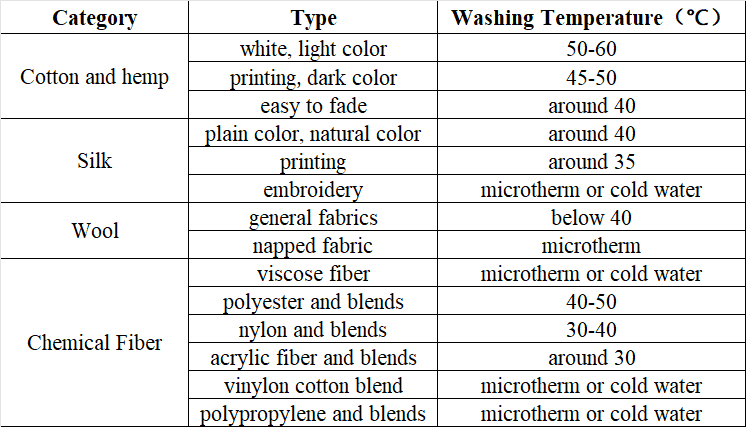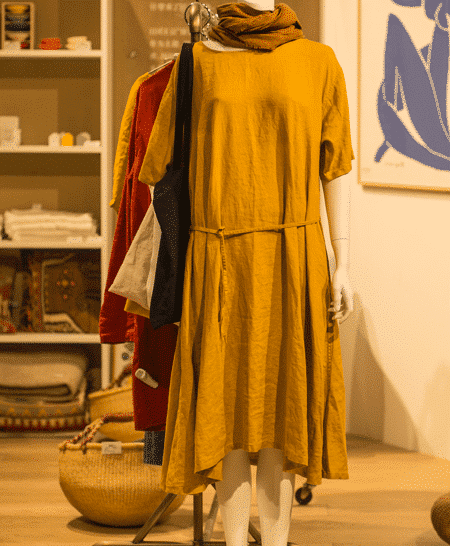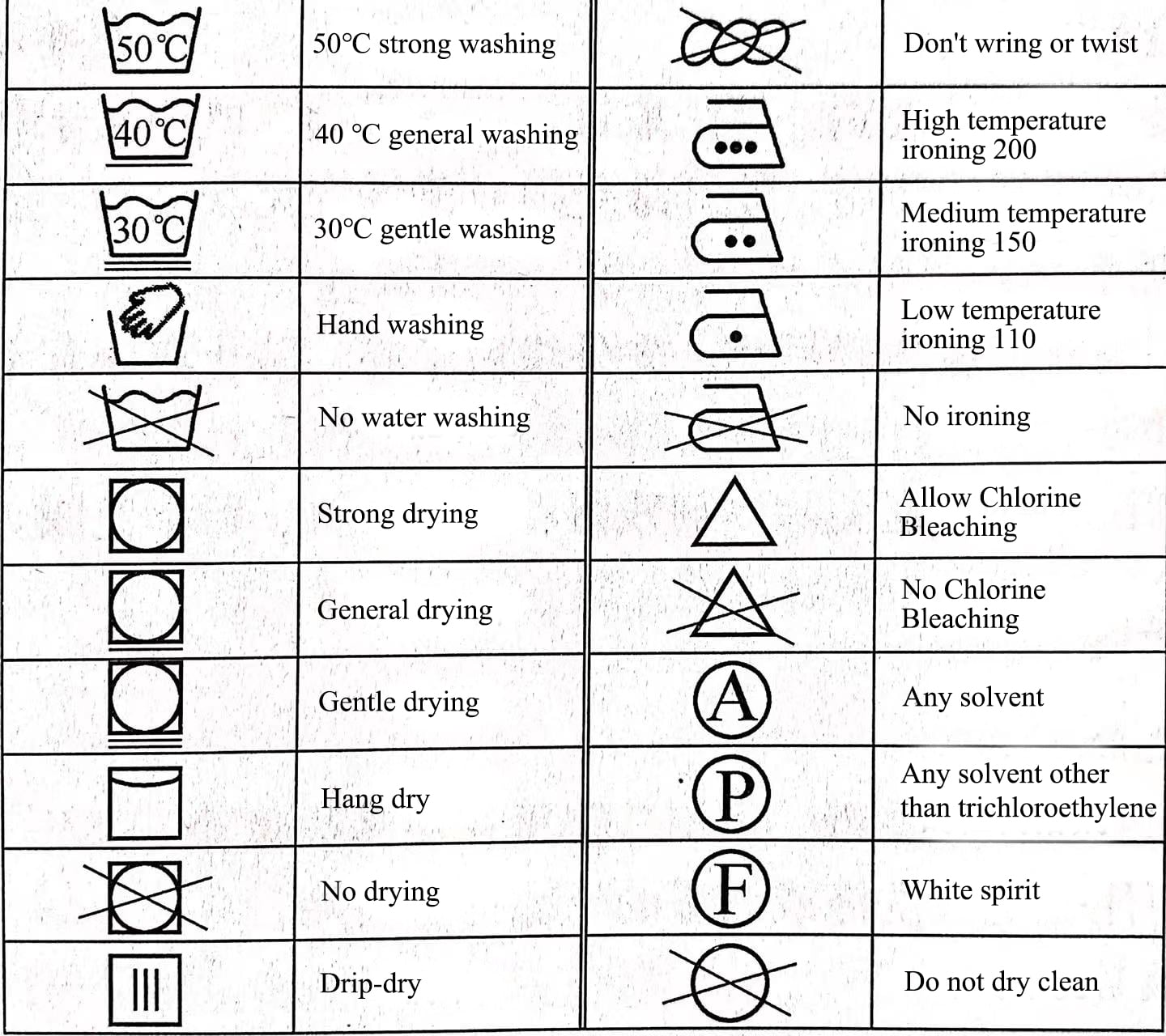The surface or gaps of clothing may be contaminated with foreign dirt or secretions from human skin. External pollutants include sandstorms, dust, soot, oil fumes, contaminated juice, vegetable soup, and other substances, mainly present on the outer clothing; Skin secretions include skin fat, sweat, and dandruff, mainly present on underwear. Wearing clothing for a long time without washing, dirt penetrates into gaps and fibers, not only blocking eyelets, hindering breathability and normal sweating, causing discomfort to the human body, but also breeding bacteria and mold, causing a decrease in fastness and even posing a threat to human health. Staying unwashed for a long time can also affect the degree of cleanliness, so clothing must be changed and washed frequently. The following are methods of washing clothes.
Methods of Washing Clothes
Classification of washing methods
- Hand wash and machine wash
The washing methods for clothing can be divided into two types: washing and machine washing, depending on the washing utensils used. Hand washing can be done by rubbing, squeezing, or brushing. Machine washing includes standard, strong washing, light washing, etc., and drying can also be done at different speeds.
Generally, cotton and linen clothing is suitable for various methods of hand washing. Brushed, velvet and silk clothing should be washed by squeezing, while woolen and chemical fiber clothing should be washed by soft brushing or squeezing according to the variety, thickness, and dyeing fastness of the fabric.
Generally, all types of clothing can be washed with a washing machine, but attention should be paid to the weight of washing and the speed of drying. Clothing that is prone to deformation or that requires less friction can be washed with a laundry bag.
- Wet cleaning and dry cleaning
According to different washing media, washing methods can be divided into wet washing (water washing) and dry washing. Dry cleaning is a washing method that uses organic solvents (such as naphtha, benzene, carbon tetrachloride, tetrachloroethylene, etc.) to remove dirt. It is suitable for high-grade woolen clothing that is not alkali resistant and prone to shrinkage, as well as other high-end clothing that is prone to deformation and fading. However, the removal effect of water-soluble dirt is poor, and the solvent is flammable, toxic, expensive, and even dissolves some chemical fibers. Regardless of the washing method, the dirty parts of clothing should be carefully washed.
Selection of detergents
There are many types of detergents, corresponding to different clothing. Therefore, before washing, it is necessary to know the raw material composition and washing requirements of the washed clothing and choose the type of detergent reasonably in order to achieve the goal of cleaning clothes and protecting clothing.
For cotton and linen clothing, due to the good alkali resistance of cotton and linen fibers, using alkaline detergents such as ordinary soap or laundry detergent during washing not only does not damage the fibers but also helps to remove oil stains. But for silk or woolen clothing, due to the lack of alkali resistance of protein fibers, neutral soap flakes, neutral laundry detergent, or weakly alkaline detergents should be used during washing to avoid fiber damage and affect the feel. For clothing with stains such as milk, meat, soy sauce, and blood, enzymatic laundry detergent should also be used to decompose and remove stains using alkaline protease.
Washing temperature
The temperature of the water during washing should be selected and controlled based on the variety, color, and degree of dirt of the clothing.
Washing Methods for Clothing With Different Fabrics
- Washing of cotton and linen clothing
Cotton and hemp fibers have strong alkali resistance, good heat resistance, higher wet break strength than dry break strength, and good washing resistance. Therefore, cotton and linen clothing can be washed with various detergents, both machine and hand washable; The washing temperature is 40-50 ℃, and excessive temperature can easily cause discoloration.
Due to the rigidity and poor adhesion of hemp fibers, when washing linen clothing, it should be gentler and softer than cotton clothing. It should not be forcefully rubbed or brushed, nor twisted; Otherwise, the fabric surface will become hairy and the fibers are prone to breakage, affecting the appearance and service life.
White clothes can be washed with strong alkaline detergent and can be boiled; Colored clothing should use detergent with lower alkalinity and reduce the concentration and temperature appropriately, and the soaking time should also be shortened: loose and thin clothing should be manually kneaded and washed; Fleece clothing should also be kneaded and washed, and after rinsing, gently squeeze away the moisture with your hands to prevent strong twisting. When brushing clothing, it is necessary to follow the direction of the fabric pattern to prevent horizontal brushing from causing fuzzing or tearing of the fabric surface.
Cotton and linen clothing should be aired in sunlight with the back facing outward to avoid fading due to exposure.
- Washing of woolen clothing
Generally, high-end woolen clothing with exquisite craftsmanship requires a lot of accessories and high requirements for shape preservation. It should be dry-cleaned as much as possible instead of washing, otherwise, it may become deformed and unable to be worn due to different fabric shrinkage or adhesive not resistant to washing.
The soaking time in cold water for general woolen clothing should not be too long, and for darker, thinner, and less dirty clothing, the soaking time should be shortened. The washing temperature should not exceed 40 ℃, and it should not be forcefully rubbed, otherwise, it will cause shrinkage and affect the feel, elasticity, and size. Due to the alkali resistance of wool, soap flakes or neutral detergents should be used for washing and wool-specific detergents can be used for all wool clothing.
When washing woolen clothing, squeezing and gentle brushing should be used, and the temperature of the rinsing water should be the same as the washing temperature. After washing the woolen clothing, do not twist it. Squeeze the moisture by hand and then reshape it while it is wet. It is best to spread it flat and let it dry. When drying, choose a cool and ventilated place to avoid strong light exposure. When semi-dry, reshape again to remove wrinkles.
- Washing of plush clothing
Soak in cold water for 20 minutes first, then dissolve neutral or weakly acidic laundry detergent in lukewarm or cold water. When washing, attention should be paid to protecting the flat and upright plush. Simply rinse it in the washing solution a few times and squeeze it a few times. Then wash twice with lukewarm water and three times with clean water. When drying, place the coat on a clean rope or pole, drain the water, and then use a hanger to air it in a cool and ventilated place.
- Washing of Silk Clothing
Except for brocade, long float, and velvet silk clothing, which are best dry cleaned, silk clothing can generally be washed with water, and hand washing is better than machine washing.
Silk has poor alkali resistance and should be washed promptly if it is stained with sweat. Silk also has natural luster, so neutral and weakly acidic detergents should be used. Dark-colored clothing should be rinsed with clean water. Soap stains or discoloration may occur when using soap flakes or laundry detergent. Washing with silk detergent can also achieve good results. Silk washing should be done in cold or lukewarm water, and should not be soaked for a long time. It should be washed as soon as it is soaked, and the washing time should be minimized as much as possible.
Due to the light and thin texture of silk, it is not advisable to use excessive force when squeezing, nor to twist the pattern vigorously, nor can it be washed with a hard board brush. After washing, rinse thoroughly with warm water and clean water, squeeze out the moisture, and hang it on a clothes hanger in a cool and ventilated place to dry. Real silk, artificial silk, and brocade silk have poor sunlight resistance, and should not be exposed to sunlight to prevent their firmness from decreasing and their color and feel from deteriorating.
- Washing of polyester clothing
Polyester has good alkali resistance and high strength in both dry and wet states. Therefore, polyester clothing does not have high requirements for detergents. Generally, laundry detergent and neutral soap can be used, which can be washed by hand or machine. The washing temperature is 40-50 ℃.
Polyester knitted clothing, due to its high extensibility, is often washed by squeezing or soft brushing, usually without a washboard. Machine washable and can be washed in a laundry bag. After washing polyester clothing, it is not advisable to twist it forcefully. It can be hung directly with water on a hanger in a ventilated area to dry in the shade.
- Washing of nylon clothing
Nylon itself has high dry and wet strength, wear resistance, and washing resistance, but its dyeing color or finishing agent is not very washable, so intense washing methods and conditions cannot be used.
When washing nylon clothing, general detergent can be used, and the appropriate washing temperature is 30-40 ℃. Thick nylon clothing can be washed with a washing machine, but the time should not be too long. Thin or knitted nylon clothing should be squeezed and washed to avoid using a hard brush or washboard and is not suitable for machine washing. Because nylon has a smooth surface and is easy to remove dirt, its wrinkle resistance is poor. Intense washing is not only unnecessary, but also can cause the surface of clothing to fuzz, pilling, and even wrinkle and deform.
After cleaning the nylon clothing, it is necessary to gently squeeze out the water and not twist it. It can be dried with water and avoid prolonged exposure to sunlight.
- Washing of acrylic clothing
Acrylic fibers have weak alkali resistance and are prone to turning yellow. Neutral detergents should be used for washing at a temperature of 30-40 ℃. Acrylic clothing has poor wear resistance. When washing, it should be gently rubbed and squeezed, and cannot be brushed with a washboard or hard brush to prevent fiber damage and pilling. Thick clothing can be washed with a soft brush or machine wash, but the time should be short.
After washing the acrylic clothing, squeeze out the water and let it dry with water. Although acrylic fibers have excellent sunlight resistance, they should avoid color changes caused by prolonged exposure to sunlight.
- Washing of down clothing
Down clothing can be dry-cleaned or washed with water. When washing, soak it in cold water, squeeze out water, soak it in a solution of soap or laundry detergent at around 30 ℃, and then spread the clothing flat on a table. Use a soft bristle brush to dip in the washing solution and brush it clockwise. Then, rinse it several times in the washing solution. After washing, rinse repeatedly with clean water, preferably at a temperature slightly higher than the washing temperature. Then, spread the clothing flat, cover it with a dry bath towel, tightly wrap it, squeeze in water, or place it in a net pocket to drain. Finally, hang it on a hanger in a cool and ventilated place to dry. After the down jacket has dried thoroughly, it can be gently tapped with a small stick in sequence to make it fluffy and restore its original appearance.
- Washing of leather clothing
After the front leather clothing of pigs, cows, sheep, etc. is dirty, if the parts are very dirty, you can use a soft cloth dipped in gasoline or ethyl acetate or butyl acetate to gently scrub. If the dirty area is large, it can be wiped clean with a damp cloth, dried, and if necessary, wiped with a polishing agent.
After the suede leather clothing is dirty, it cannot be wiped with a damp cloth. It is advisable to gently tap with a small round stick to remove the floating dust, and then gently wipe with a soft cloth dipped in gasoline or acetate to remove the dirt.
- Washing of leatherette clothing
Artificial leather clothing has a smooth and clean surface, deep color, and is not easily stained or stained. If it is contaminated, it can be wiped or brushed with a damp cloth or brush dipped in water. If it cannot be cleaned with clean water, it can be washed with a neutral detergent solution, but it cannot be wiped with gasoline.
- Washing of synthetic leather clothing
The synthetic leather sole is made of synthetic fibers such as nylon, polyester, and polypropylene, and is not resistant to high-temperature washing. Therefore, synthetic leather clothing should first be wiped with a soft cloth dipped in a detergent solution, and then washed with warm water. After washing, hang it in a cool and ventilated place to dry. Avoid baking, and exposure to the sun, and do not use gasoline for dry cleaning.
Clothes Washing Symbols
In summary, the following issues should be considered when washing clothes
(1) The selection of detergents should be based on the acid and alkali resistance of fabric fibers. Neutral or weakly acidic detergents should be selected for protein fibers, while cellulose fibers are generally suitable for detergents.
(2) The determination of water temperature and soaking time should consider the degree of dirt on the clothes, the thickness of the clothes, the possibility of fading, the ability to shrink, and the performance of the fibers in water.
(3) The choice of dry cleaning and water washing is that most clothes can be washed with water, while some clothes that have high requirements for shape retention and are concerned that water washing may deform the clothes and affect their appearance can choose dry cleaning. Dry cleaning has limited cleaning effect on water-soluble dirt.
(4) The choice between strong washing and light washing considers the thickness, degree of dirt, washability, and rubbing resistance of the clothing. For clothes that are prone to pulling and deformation and require light washing, laundry bags can also be used to wrap and clean them to protect them.
(5) The selection of air drying methods should first consider the damage caused by exposure to clothing, including color and material. Secondly, consider how to protect the original form of clothing from damage due to washing and air drying; The third is to consider the hydrophobicity of the clothing and choose whether to air it with water or after initial drying.





-1024x683.jpg)
-1024x683.jpg)
-1024x683.jpg)
-683x1024.jpg)
-1024x683.jpg)






